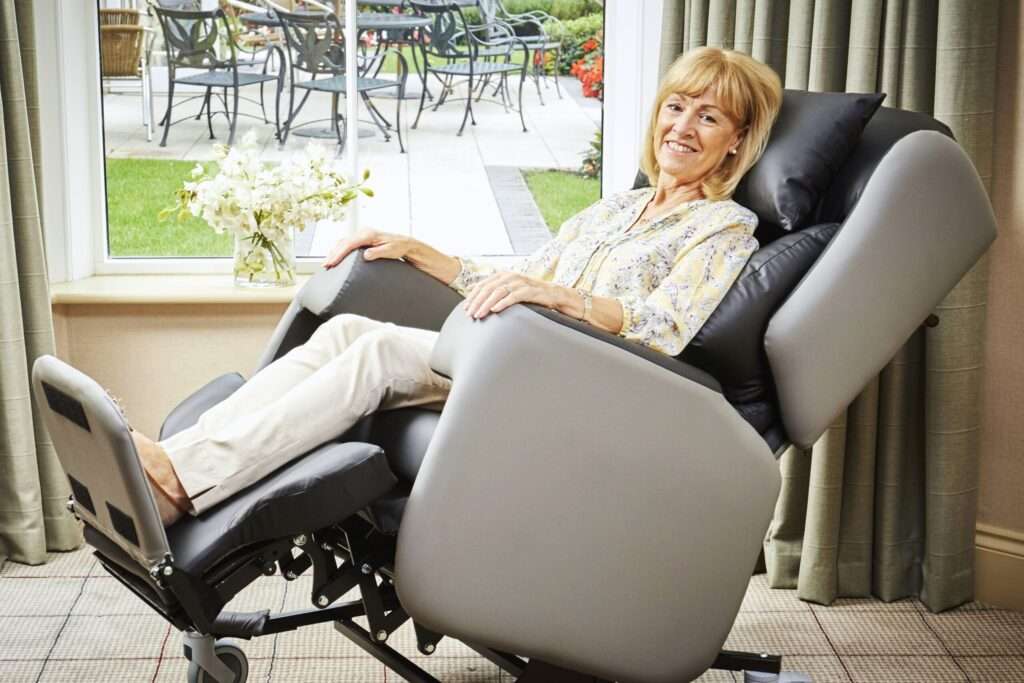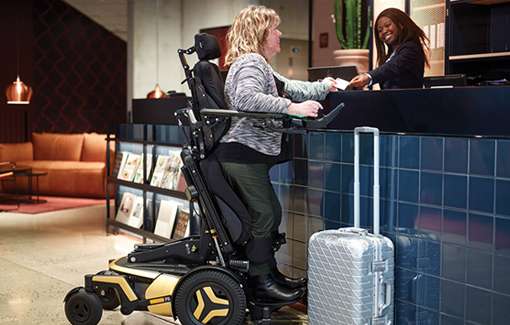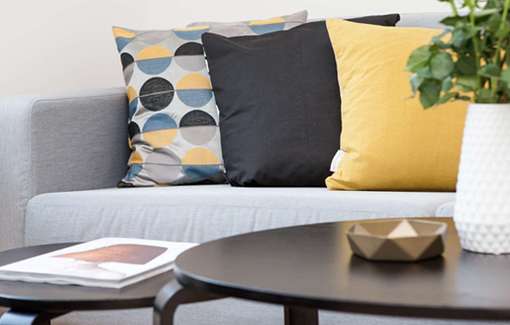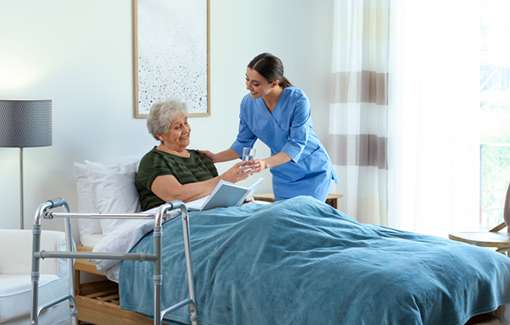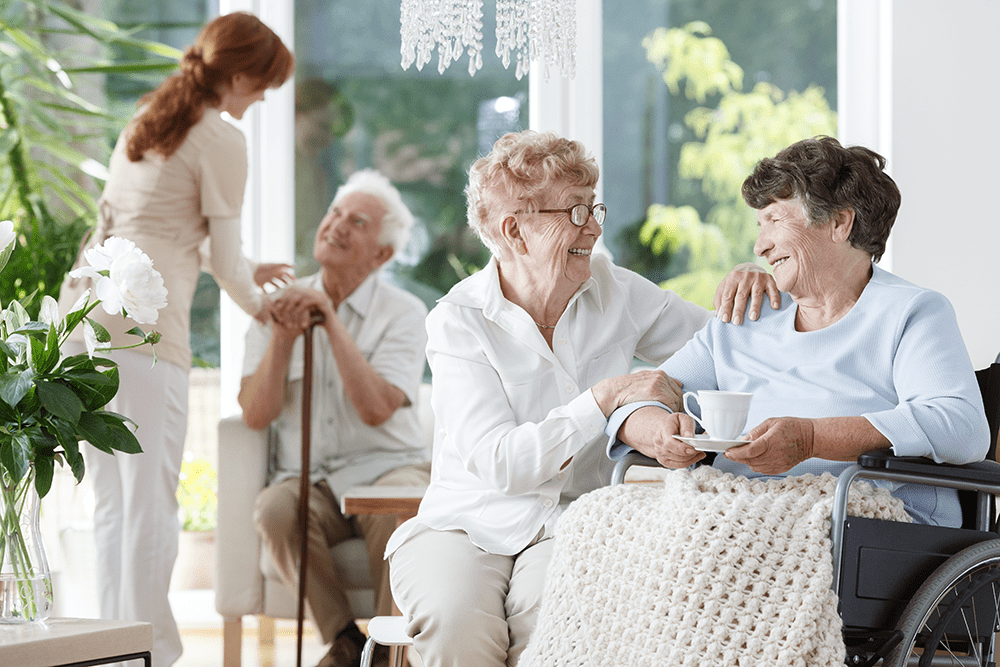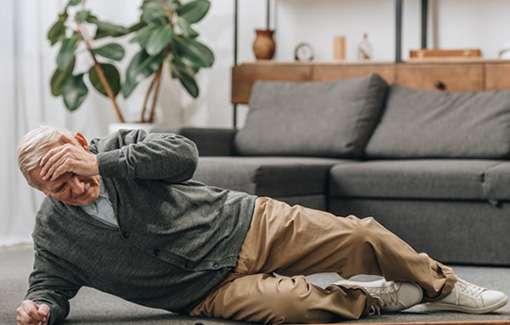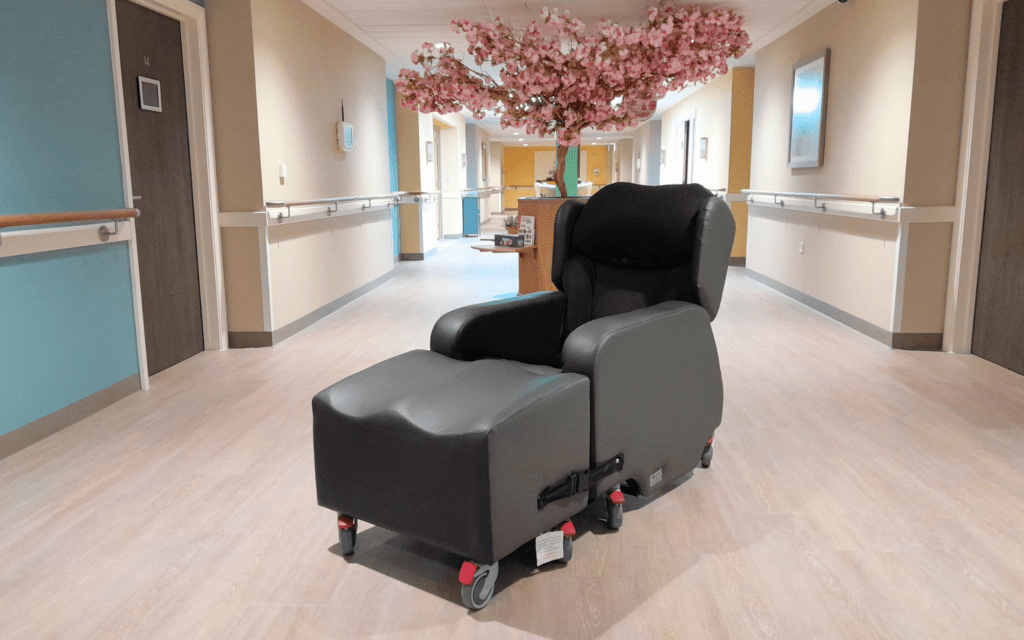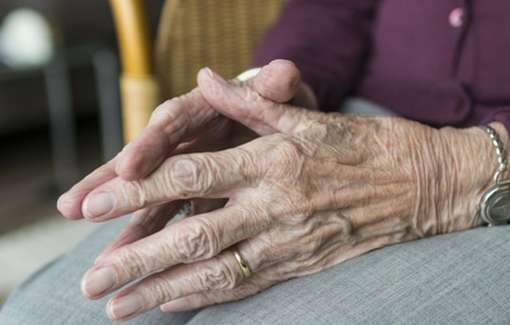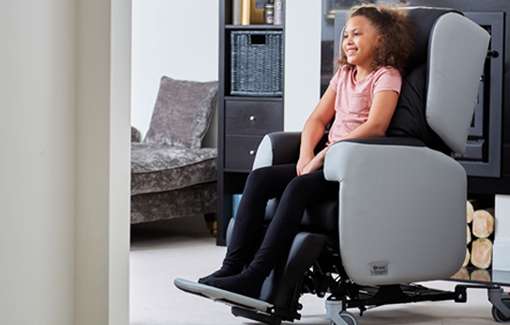A key topic for seating and mobility professionals to consider when evaluating moving & handling as well as positioning options for patients is tilt in space.
Knowing the definition and benefits of tilt-in-space (TIS) can also really help when choosing a chair for yourself or someone else. Whether it’s a rise and recline chair, a care chair, or even a wheelchair, tilt-in-space can be extremely beneficial in all cases.
The tilt in space feature in a rise and recline chair or a mobility aid is also extremely important in preventing pressure injuries and sores from developing.
With this in mind, let’s take a look what the definition of tilt-in-space and how it could potentially benefit you and influence your specialist seating options.
So let’s have a look at what tilt-in-space is and its benefits.
Table of contents
What is Tilt-in-Space?
Inactive and sedentary lifestyles are a growing crisis amongst whole UK population as a whole, with around 20 million adults in the UK being insufficiently active. This sedentary behaviour brings the potential for health complications for the public at large.
The potential for health complications caused from being sedentary grows amongst those with enforced inactivity, such as elderly or disabled people, hospital-bound patients and people with mobility issues.
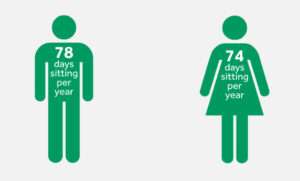
Sedentary lifestyles are a problem among the entire population — Source
Tilt-in-space is a function in specialist seating that redistributes a person’s sitting weight over a greater area of their body.
Imagine sitting in a dining room chair (fig. 1). When you are sitting up straight with your feet flat on the floor, your side profile presents nice 90-degree angles between your back, upper legs and lower legs.
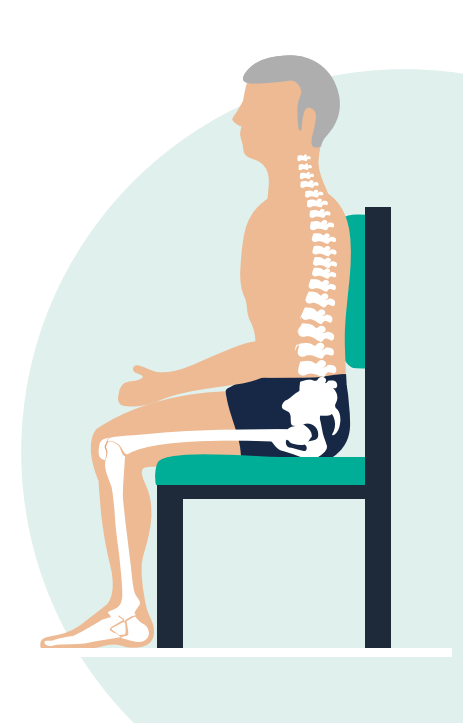
Fig. 1
After sitting in this position for a while, you would notice some discomfort in your buttocks and thighs, as they are taking all the weight of your upper body through the chair. You may readjust your posture slightly but this wouldn’t usually be an issue just for the duration of a meal.
For people with medical conditions and mobility issues that affect their movement, it can become an issue if they are seated in the same position for long periods of time, and can result in damage to the skin and pressure sores.
This is where the tilt-in-space motion comes into play to resolve this issue.
Imagine the same sitting profile above, but the user is tilted back on a pivot point where the back of the seat meets the backrest.
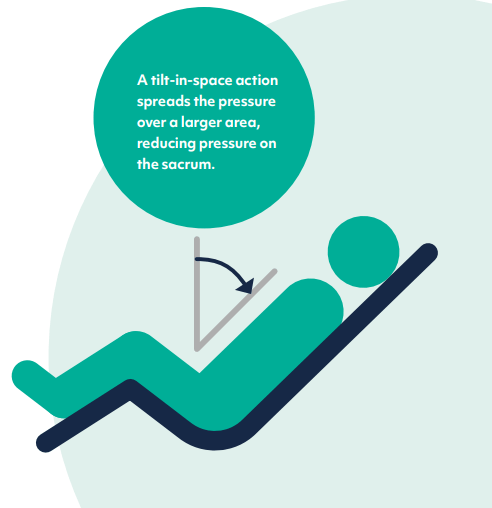
Tilt-in-space functionality
The person has the same 90 degree sitting profile, but is tilted back in relation to the horizontal plane of the floor. This is effectively using gravity to spread the person’s body weight through a larger area of the chair, just by changing the angle of the chair to the floor.
What are the Benefits of Tilt In Space?
Pressure Relief
Pressure relief is a key benefit of the tilt-in-space function in specialist seating.
Pressure injuries and sores develop when excess amounts of pressure are placed on one part of the body for a prolonged period of time.
Tile-in-space plays a large role in preventing pressure sores from developing as it evenly distributes weight across the whole body.
When you are in a normal seating position, you’ll find that most of your body weight will go through your buttocks and thighs. Then a smaller portion will go through your feet, and an even tinier amount will go through your back and arms.
Tilting someone who is seated in a chair represents a shift in weight-bearing from the traditional seating position (fig. 1) which puts most of your body weight on the lower sacrum area.
The tilting motion shifts some of that weight through the legs and the back of the chair. As well as spreading pressure more evenly across the body, it stops all the weight of the upper torso and back going through the lower back, reducing pressure on the spine.
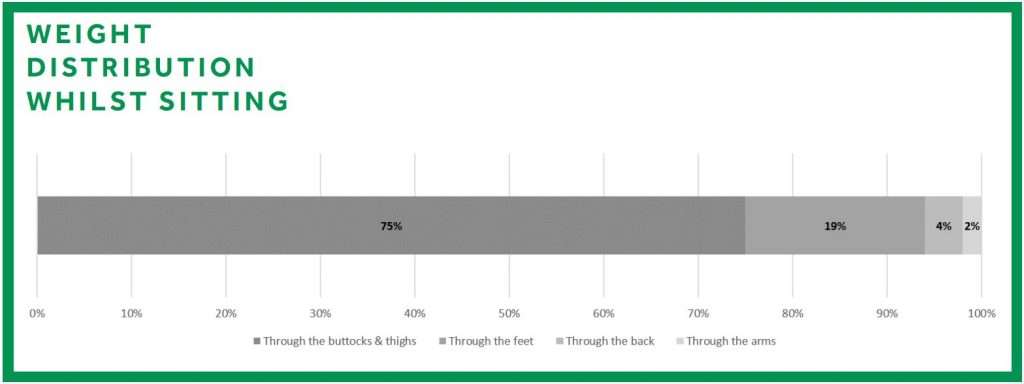
Weight distribution while sitting
Improved Posture
This principle of tilt-in-space applies throughout the specialist seating world, and as well as relieving pressure it has many postural benefits as well.
It reduces the tendency to slide forward in the chair, known as ‘sacral sitting’ or ‘slouching’ (fig. 2). The person’s body is shifted into the back of the chair, improving their sitting profile and fully supporting their pelvis.
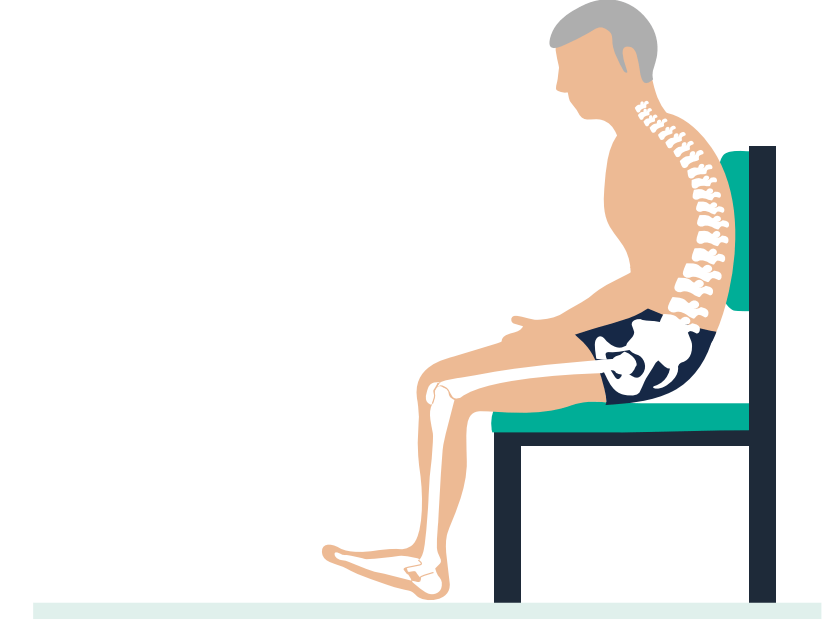
Fig. 2
By tilting back ever so slightly, you’ll find that your spine will straighten out and your head is more central. This helps to prevent things like kyphosis and leaning which can be detrimental to your health and quality of life.
An angle between 15° and 30° should help you attain better postural control.
Improved Skin Integrity
A tilt in space chair allows the seated person to maintain the correct posture while being tilted so pressure is distributed evenly across the body. This reduces shearing and lessens the chances of pressure injuries developing, even when sitting for prolonged periods of time.
Assists Breathing and Swallowing
By tilting the seat, pressure on the chest and abdomen is reduced, allowing for improved lung expansion. This can be especially beneficial for individuals with conditions such as chronic obstructive pulmonary disease (COPD) or neuromuscular disorders.
For people who experience difficulty swallowing (dysphagia), maintaining an upright position may increase the risk of aspiration (food or liquids entering the airway). Tilt-in-space can be adjusted to a position that minimizes the risk of aspiration, making it easier for them to swallow safely.
Improved Circulation
By raising the legs and moving the body into a semi-recumbent position, blood circulation is improved throughout the body. This increased oxygenation of the blood keeps skin and muscle tissue healthy, and guards against the build-up of fluid that can cause oedema.
Who Needs Tilt In Space?
Anyone who expects to be seated for prolonged periods of time can benefit from tilt-in-space. This could be people recovering from surgery in hospital, receiving treatments such as dialysis or chemotherapy that require them to be seated, or patients receiving longer-term care in care homes or hospices.
Individuals with physical disabilities may use a tilt in space wheelchair when out and about, or elderly patients with mobility issues may use a riser recliner chair with the tilt in space function to stay comfortable at home.
What is the Correct Amount of Tilt to use?
How much tilt to use will vary between patients, and it can also vary between equipment. The required tilt when in a rise and recline or care chair may be different from what is required in a tilt in space wheelchair.
Generally, greater angles of recline are used to reduce pressure injuries, while lesser angles are used to maintain good posture and stop a patient from sliding in the chair. For more on sliding and falling, take a look at our tips on how to stop someone from falling out of a chair or how to stop someone leaning in a chair.
A 2010 investigation concluded that wheelchair tilt in space should “be at least 35° for enhancing skin perfusion over the ischial tuberosity when combined with recline at 100°.
The study goes on to state that “wheelchair tilt in space should be at least 25° when combined with recline at 120°.”
As a rule of thumb, staying at angles between 30 and 45 degrees should be sufficient for pressure relief of posture correcting needs.
If a patient is at high risk of pressure injuries, then a tilt of around 45 degrees might be needed to help blood flow to key areas and redistribute pressure.
Different Types of Tilt in Space
Tilt-in-space has different applications in practice, such as single motor or dual motor tilt-in-space.
Single motor tilt-in-space is the standard tilt-in-space function, tilting the chair back whilst raising the legrest, as shown in fig. 3. Single motor chairs feature a rise function, setting the motion in reverse to lift the person forward into a standing position.

Fig. 3
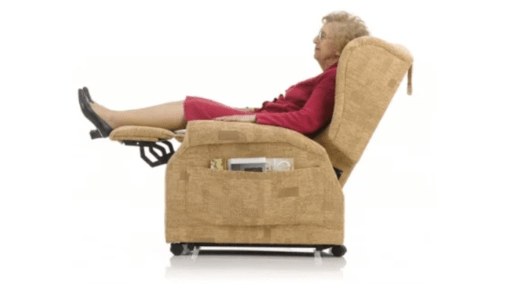
A single motor tilt-in-space chair
Dual motor (fig. 4) uses an extra motor to enhance the positioning options in the chair. The backrest or legrest can be tilted independently of the seat base, increasing the angle of recline and even fully reclining into a lying position.

Fig. 4
Regulated motion is an extra feature available for high risk clients, which automatically adjusts the angle of tilt in space at set time increments, changing weight distribution and preventing the build up of pressure in one area.
For more information on single and dual motor tilt-in-space, read our article here.
Tilt-in-space shouldn’t be confused with recline, which is just the independent movement of the backrest so someone can lean back in the chair more.
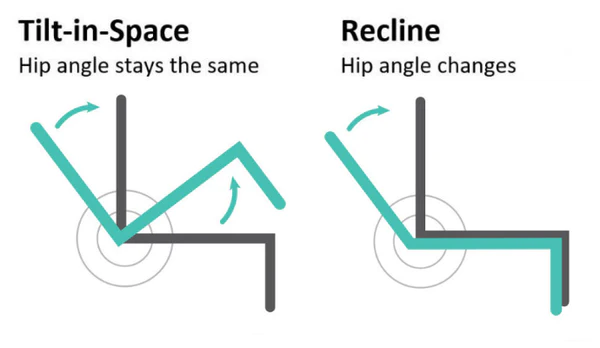
The difference between Tilt in Space & Back Angle Recline
Summary
Tilt-in-space is used in many care chairs and riser recliners to help people stay comfortable and healthy when sat down. There are many benefits and we highly recommend including it in seating specifications for clients who may benefit from it.
If you want to try out a tilt-in-space chair for yourself, a loved one or one of your clients, give us a call on 01423 799960, or get in touch with us and we’ll be more than happy to help.
For more information on specialist seating and how to prescribe it, take a look at our free specialist seat ebook.





